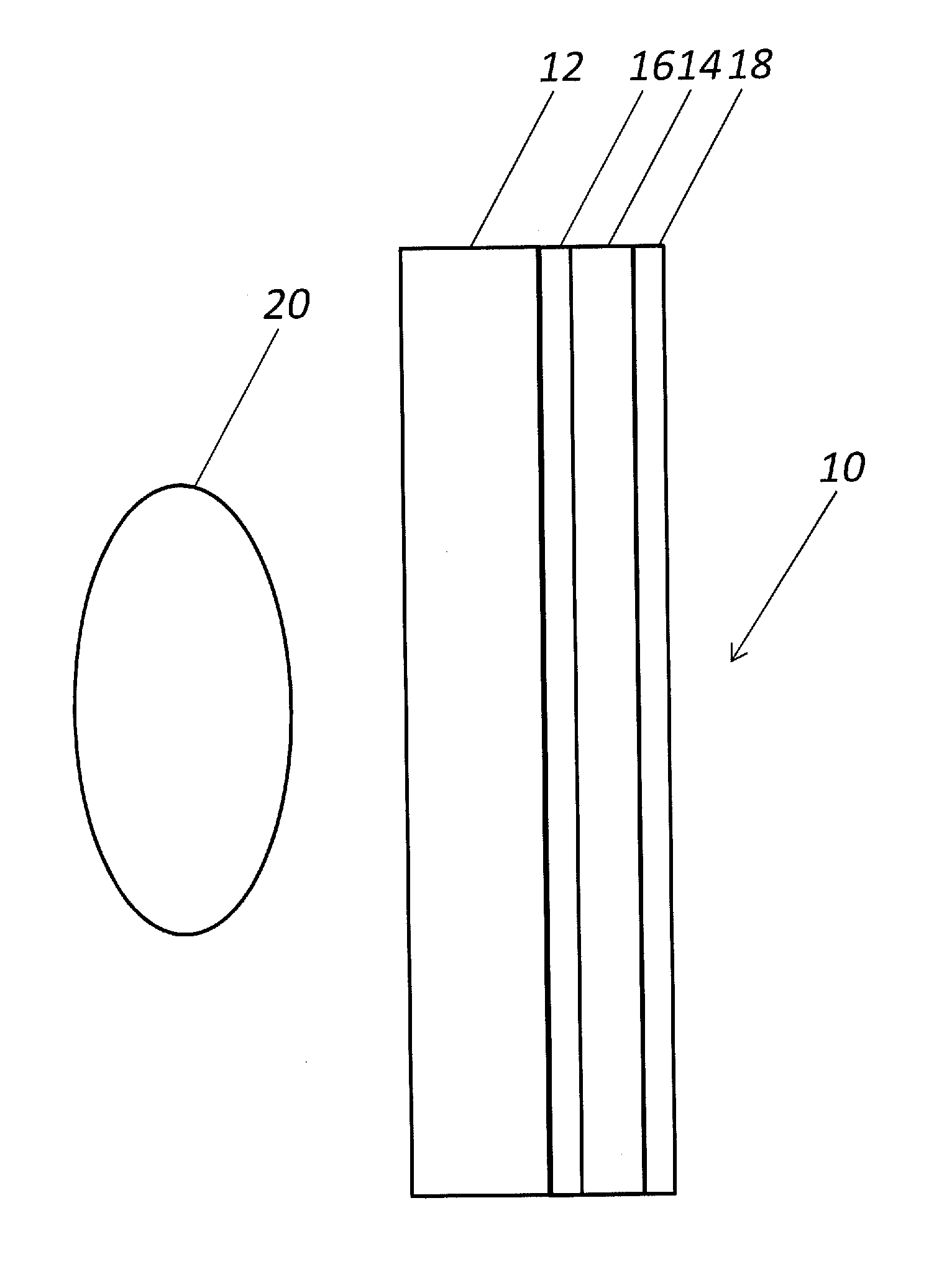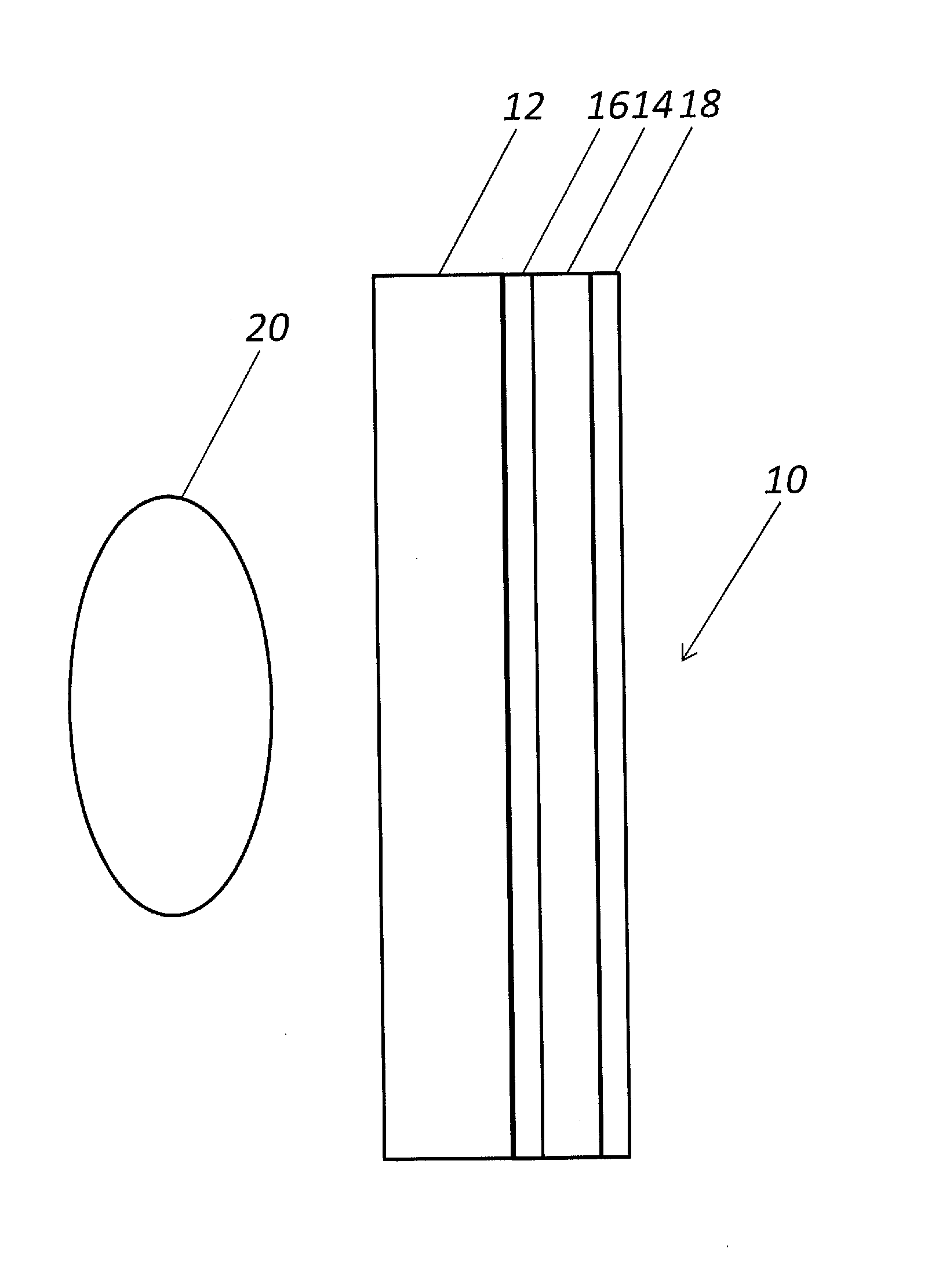Computed radiography imaging plates and associated methods of manufacture
a radiography and computed radiography technology, applied in the field of medical and industrial imaging, can solve the problems of preventing the proper placement of such intensifying screens and the use of intensifying screens is extremely difficult, and achieve the effects of reducing internal scattering, increasing resolution, and reducing the radiation dose needed for radiography
- Summary
- Abstract
- Description
- Claims
- Application Information
AI Technical Summary
Benefits of technology
Problems solved by technology
Method used
Image
Examples
Embodiment Construction
[0026]Referring specifically to FIG. 1, in one exemplary embodiment of the CR imaging plate 10 of the present disclosure, a metallic or other similar high density material layer 12 (also referred to herein as the intensifying layer 12) is coupled to the phosphor layer 14. Reflective or anti-reflective layers or surfacing 16 optionally may be disposed between the intensifying layer 12 and the phosphor layer 14, depending on desired use of the imaging plate 10. The thickness and material composition of the intensifying layer 12 will affect the effective quantum efficiency of the detector (not illustrated) and change the dose response curves and the effective resolution. Different thicknesses and material compositions of the intensifying layer 12 will be better suited for different energies of x-rays and applications.
[0027]The conventional backing layer (not illustrated) may be able to be removed and its construction is less vital to the present disclosure. It may still be needed to pr...
PUM
 Login to View More
Login to View More Abstract
Description
Claims
Application Information
 Login to View More
Login to View More - R&D
- Intellectual Property
- Life Sciences
- Materials
- Tech Scout
- Unparalleled Data Quality
- Higher Quality Content
- 60% Fewer Hallucinations
Browse by: Latest US Patents, China's latest patents, Technical Efficacy Thesaurus, Application Domain, Technology Topic, Popular Technical Reports.
© 2025 PatSnap. All rights reserved.Legal|Privacy policy|Modern Slavery Act Transparency Statement|Sitemap|About US| Contact US: help@patsnap.com


